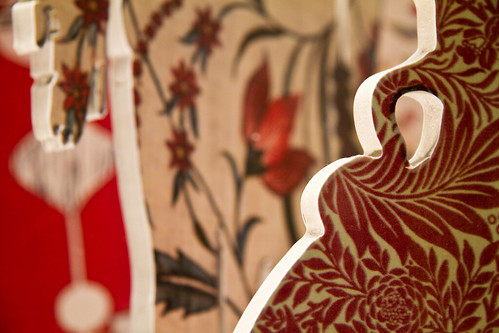I hope you enjoyed yesterday’s post. Today, we’ll talk more about depth of field.
Let’s take it from the moment where I started talking about manipulating depth of field. There are three factors that define (or manipulate) depth of field:
- aperture setting
- focal length of the lens
- distance from the subject
Focal length is something you’ll find on every zoom lens, not just on an SLR camera but on compacts as well. When you zoom in or zoom out, you change the focal length. Focal length could be changed by pressing a button on a compact camera or by moving the ring on a lens on an SLR camera.
Aperture is a hole in a lens through which the light passes on its way to the camera sensor when the shutter opens (when you press the shutter button). Again, it could be a matter of using a button or a ring on a lens. The aperture is measured in F-stops – the smaller the F-stop the wider opening in the lens so the more light comes into the camera through the shutter. That’s why the lenses with smaller F-stops are much more expensive, i.e. if we compare standard 50mm lenses F1.4 lens is much more expensive than F1.8 or F2.0 lens.
Small aperture setting will also create shallow depth of field, that’s why lenses with small minimum aperture setting are invaluable in portrait photography. I’ll give you an example:
I use two lenses on a regular basis:
- 17-85mm F4.0-5.6 zoom lens
- 60mm F2.8 prime lens
Zoom lens is great for overall photography, but when it comes to portraits, nothing can beat the prime lens with its F2.8. F2.8 gives me a fantastic shallow depth of field that I cannot achieve with the zoom (especially because the zoom goes to F5.6 at 40mm and more and for portraits you use longer focal lengths of 60mm and more).
Here’s an example of a photo taken with a shallow depth of field:
 When setting an aperture, keep an eye on shutter speed. As you change the aperture, the shutter speed will change. As an example, when you change the aperture from F5.6 to F2.8 more light comes into the camera so the shutter speed will increase. Most photographers would use “Aperture Priority Mode” often displayed on the camera as AV mode. That’s what I use most of the time, because then I can focus on the depth of field and the camera will set the shutter speed automatically to adjust the amount of light coming into the camera.
When setting an aperture, keep an eye on shutter speed. As you change the aperture, the shutter speed will change. As an example, when you change the aperture from F5.6 to F2.8 more light comes into the camera so the shutter speed will increase. Most photographers would use “Aperture Priority Mode” often displayed on the camera as AV mode. That’s what I use most of the time, because then I can focus on the depth of field and the camera will set the shutter speed automatically to adjust the amount of light coming into the camera.
That’s it for today. More information soon. Enjoy! 🙂
